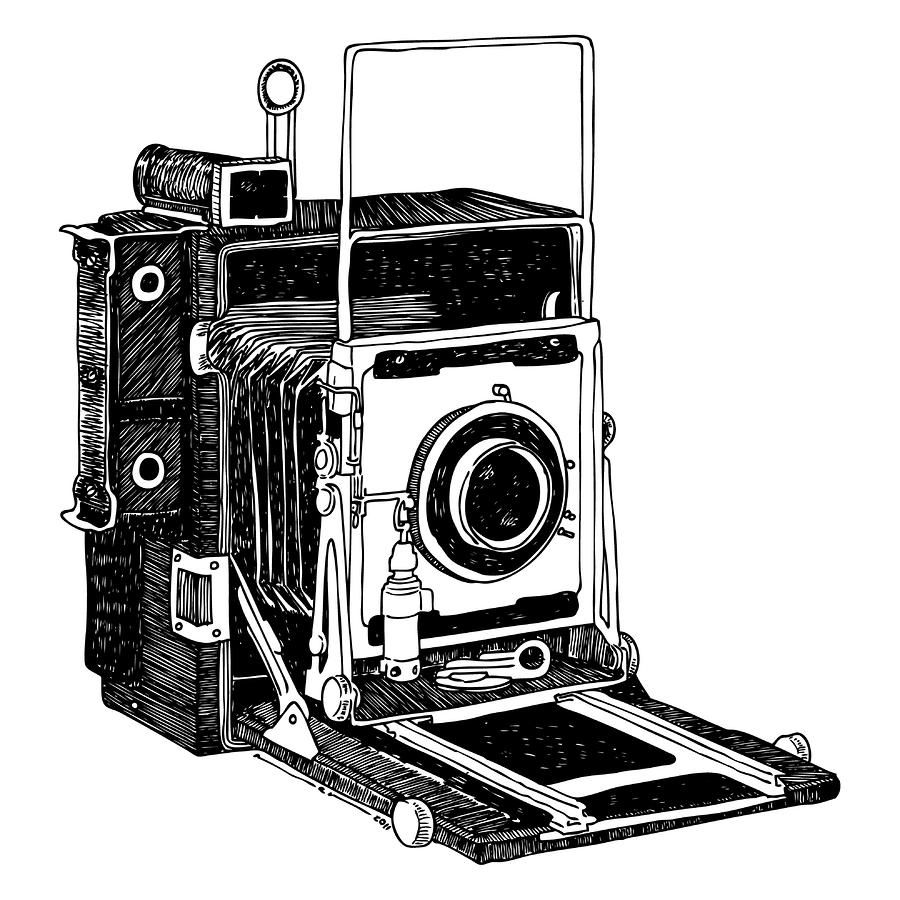
Communicating the Voices of the Unheard:
The Photography of Dorothea Lange
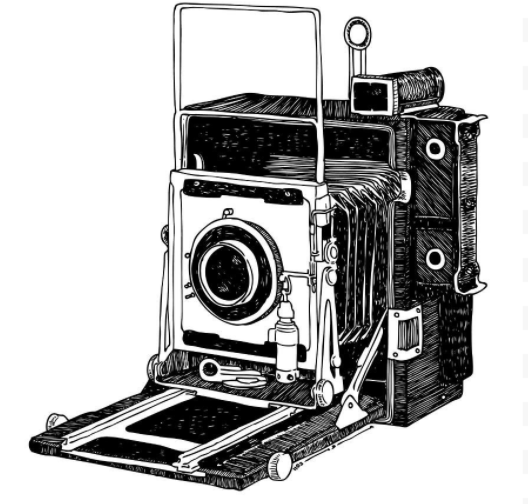


The FSA provided direct assistance to tens of thousands of farmers through housing camps and cooperative farms. These farms were collectively worked by farmers under the guidance of government experts hired to prevent economic failure.
"Dorothea Lange" (The Dust Bowl by Ken Burns, 2012)
“Lange’s FSA photographs served as a political tool, for they helped the nation see the effects of the Depression on an individual level and challenged the agricultural practices and policies of the time.”
— Emily Yoshiwara in "Dorothea Lange’s Social Vision: Photography and the Great Depression" (University of Washington, 2010)
The FSA faced opposition from critics who labeled cooperative farms as "socialistic" experiments in collectivizing agriculture. Growers resented government aid for migrant farmers, since they benefited from the large class of homeless, dependent workers. Lange's work for the FSA photography department was crucial in combating these views and increasing public support to ensure that government assistance for farmers could continue throughout the Depression.
"The program promptly expanded to include temporary and permanent camps and shelters, with sanitary facilities, medical care, and recreational facilities, located wherever migrants congregated... Although the primary purpose of the program was merely to improve the living conditions of the migrants while en route between work and not to alter their status, the leaders of the FSA continued to dream of a program that someday might grant this class of farm families greater permanent economic and social security and stronger bargaining power."
— Sidney Baldwin in Poverty and Politics: The Rise and Decline of the Farm Security Administration (1968)
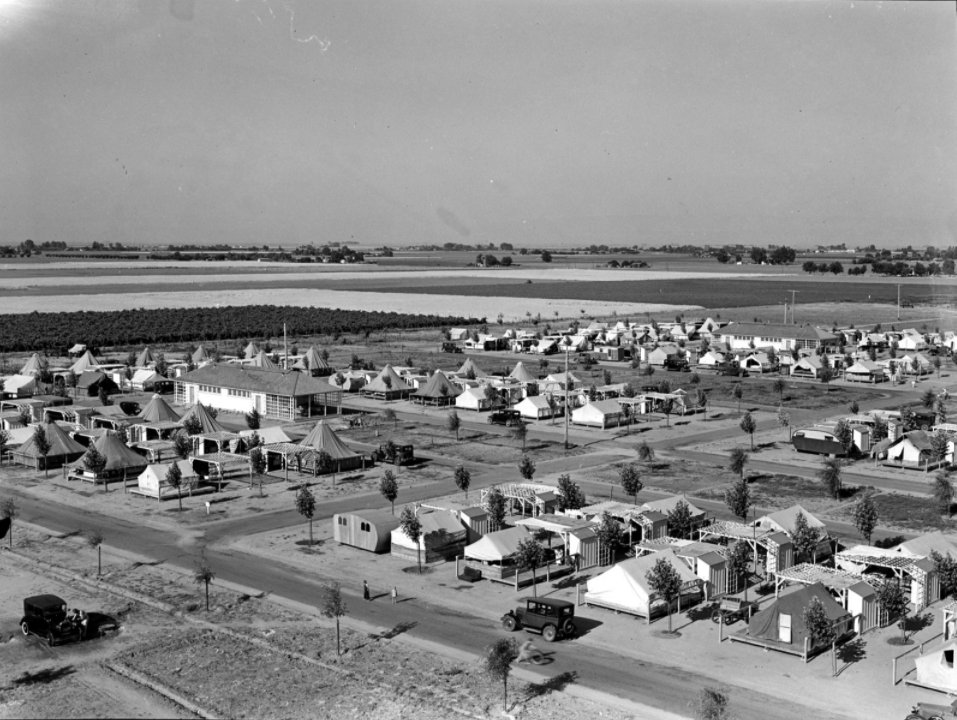
"Arvin Camp Settling Down," Dorothea Lange, 1940 (The Dorothea Lange Collection, Oakland Museum of California)
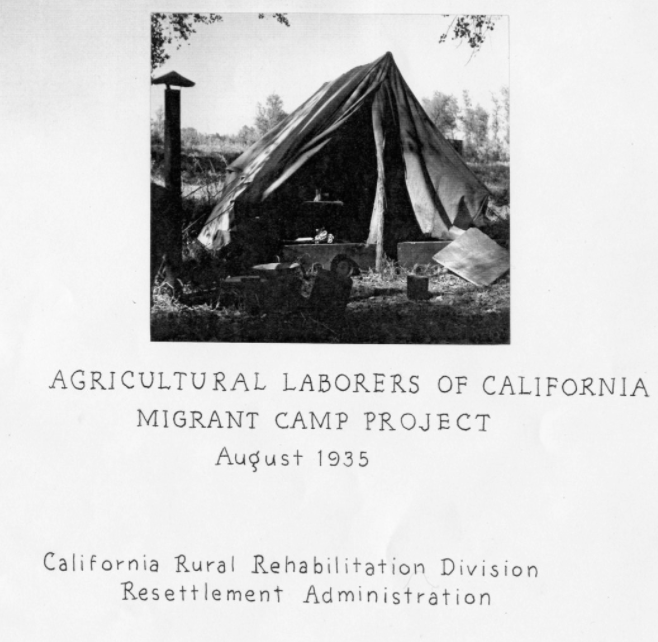
"Title page of Statement in support of project to establish camps for migrants in California," 1935 (The Dorothea Lange Collection, the Oakland Museum of California)
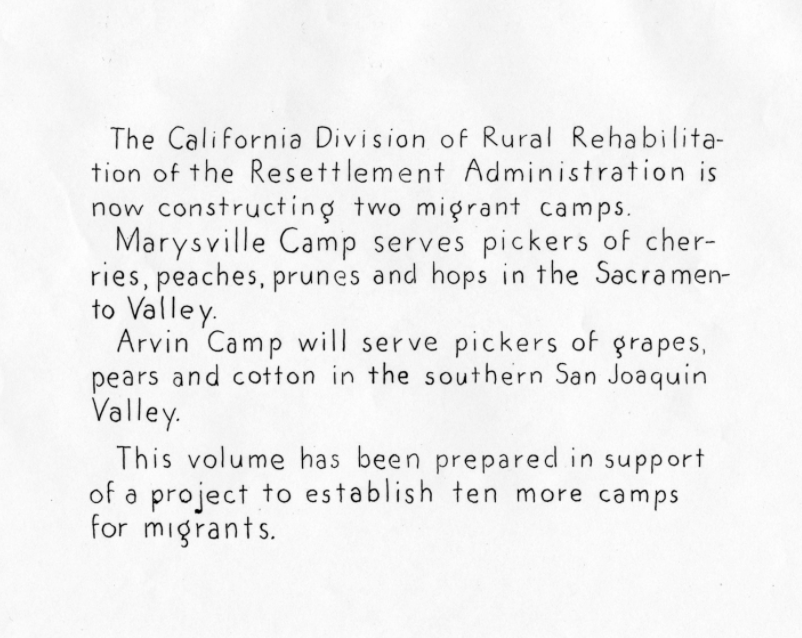
"Page from Statement in support of project to establish camps for migrants in California," 1935 (The Dorothea Lange Collection, the Oakland Museum of California)
Dorothea Lange’s photographs communicated the lifestyles and hardships of rural Americans to the rest of the nation. Through visual representations, Americans saw and understood the nation’s impoverished and forgotten. Lange’s photographs memorialized the Great Depression, communicating the need for national unity and action to alleviate poverty and restore prosperity.
"Dorothea Lange Photography and Social Commentary," 2015 (C-SPAN)
“Documentary photography records the social scene of our time. It mirrors the present and documents for the future. Its focus is man in his relation to mankind. It records his customs at work, at war, at play... it portrays his institutions—family, church, government, political organizations, social clubs, labor unions. It shows not merely their facades, but seeks to reveal the manner in which they function, absorb the life, hold the loyalty, and influence the behavior of human beings.”
— Dorothea Lange in A Pageant of Photography (1940)
“The news of the forced separation of families on the US-Mexico border, for example, recall the photographs Lange took of the internment of American citizens of Japanese ancestry where American citizens and children were forcibly removed from their homes and families due to unfounded racial hysteria...
Given the unstable political and social times we are living in – with totalitarian and authoritarian paternalistic regimes on the rise and a growing nationalism on the up in Europe and beyond – it seems incredibly important to look back into history and understand how its documentation can reflect and effect change."
— Alona Pardo, curator of a Lange retrospective, quoted in "Why Photographer Dorothea Lange’s Political Legacy Continues to Endure," 2018 (AnOther Magazine)
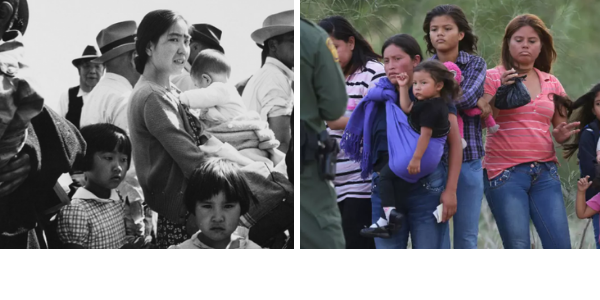
"Families of Japanese ancestry arrive at Turlock Assembly Center. Evacuees will be housed later at War Relocation Authority centers," Dorothea Lange, 1942 (The Dorothea Lange Collection, Oakland Museum of California)
"A US Border Patrol officer oversees a group of women and children who crossed the border from Mexico," John Moore, 2014 (AFP News Press)
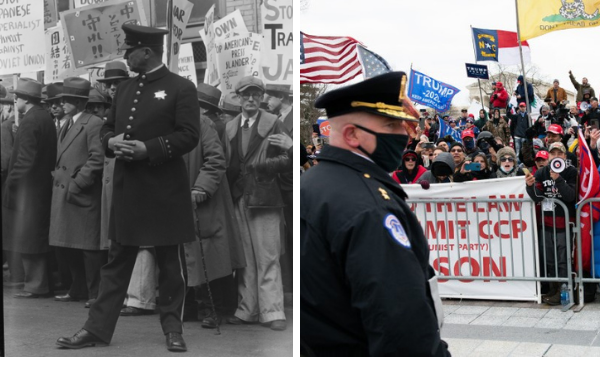
"Street Demonstration, San Francisco," Dorothea Lange, 1933 (The Dorothea Lange Collection, the Oakland Museum of California)
"A U.S. Capitol Police officer stands guard during a protest outside of the U.S. Capitol building in Washington, D.C., U.S., on Wednesday, Jan. 6, 2021," Graeme Sloan (NBC News)
Her devotion to creating a complete record of both the Depression and Japanese internment has inspired future photographers to document challenging times, spreading awareness in the short-term and allowing people to reflect on history in the long-term. Photography continues to be a powerful medium in communicating current events to others in the nation and across the globe. As new political, economic, and social crises emerge, it is essential that photographers capture and communicate the experiences of the marginalized, thus creating a sense of shared responsibility to influence those with the power to improve society.